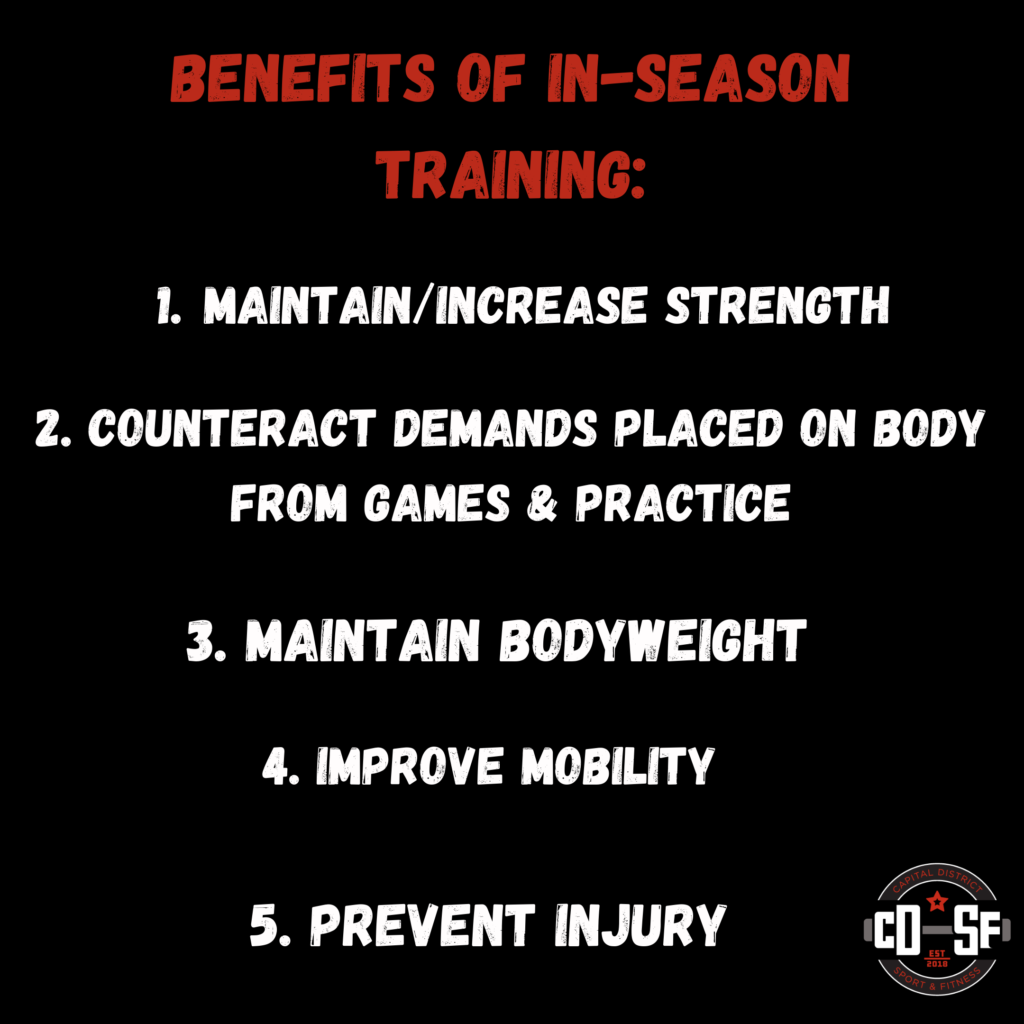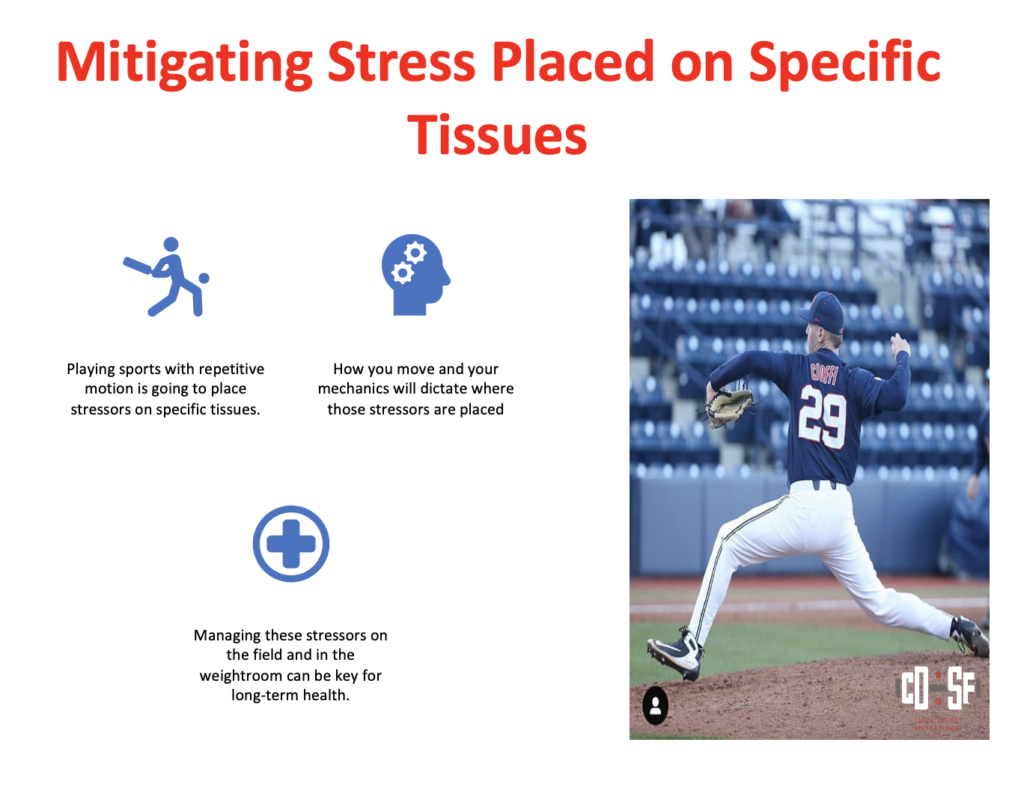An athlete’s motivation to get in the weight room during the off-season is often to reap the rewards when in-season.
No grind, no shine is what they say.
Even though there’s no argument regarding the benefits of an off-season strength and conditioning program you’ll notice parents and athlete’s showing hesitation when it comes to training while in-season. Why is this? I think it has to do with a lack of education and communication about what the weight room goals are during a competitive season.
Instead of 4x/week of one and half hour sessions where an athlete will work on speed, power, strength, and conditioning in a single session the session needs to be dialed back and the demands of practice and games need to be taken into consideration. Below you’ll learn why we encourage in-season training at CDSF and how we adjust our programs for athletes who are doing so.
What’s the Big Deal with In-Season Training?
If your goal is to get a promotion at your job would you work relentlessly for nine months during the year and then take a break for three months? Athletes find themselves in a cycle every year of taking two steps forward and one step back when it comes to their athletic development. A thoughtful in-season strength training program will allow an athlete to continue taking steps forward in their development by allowing them to continue building strength, improving movement capabilities, and decreasing the chance of injury by combating overuse injuries seen during a season.

If athlete A trains in-season 1x/week for three months that’s 12 training sessions. If that is repeated for all fours years of high school that’s 48 more training sessions than someone who chose not to train in-season. That’s 48 more opportunities to get stronger, move better, decrease injury risk, and improve performance.
Program Adjustment 1: Take Game and Practice Demands into Account
When in-season there are more competing demands. This means an athlete’s body is encountering more stress outside of the weight room than during the off-season. For example, a baseball pitcher is accumulating large amounts of stress at their shoulder, elbow, and hips while in-season. Because of this it’s important to shorten training sessions (45 minutes instead of 90) and select exercises that don’t put additional stress on those areas and instead help those areas recover and maintain their range of motion. The same can be said to a hockey player and their hips or a basketball player and their knees and ankles. By counteracting these demands you can help decrease the stress placed on these areas of the body and help prevent overuse injuries.

Program Adjustment 2: Exercise Selection
During in-season training you want to avoid large amounts of delayed onset muscle soreness, so that if doesn’t affect your practice or game play. To accomplish this, we decrease the total number of sets and reps performed during a training session and select exercises with less eccentric stress. This will help an athlete continue building strength without feeling sore and tired for practice and games.
Program Adjustment 3: Omitting Plyometrics and Cardio
If you watch someone train at CDSF during their off-season you’ll notice we spend time every session sprinting, jumping, hopping, and throwing medicine balls. All of these tools are excellent to improve speed and power development. But, when in-season an athlete is performing a large number of sprints, jumps, and hops while practicing and competing. We don’t see any additional benefit to having these in their training program in-season and feel like time is better spent with added tissue recovery, mobility, or stability work based on the athlete’s movement patterns and the demands of their sport.
In Summary
In-season training can serve just as important of a purpose as working out during the off-season. A crucial part of athletic success is balancing work and recovery. A smart in-season program can help your body recover from competition while also continuing to get stronger, move better, and develop as an athlete.
About the Author

Mike is an experienced strength and conditioning coach and massage therapist who has spent the majority of his career in Boston training professional, collegiate, and high school athletes of various sports, as well as helping general fitness clients of all backgrounds learn to move better and get stronger than ever before. He earned his Bachelor of Science Degree in Applied Exercise Science, with a concentration in Sports Performance, from Springfield College and completed a highly sought after six-month internship at Cressey Sports Performance. Mike specializes in teaching athletes and general fitness clients to get the most out of their bodies by enhancing their movement quality and creating exercise programs that allow you to get stronger, faster, and more powerful in a safe and effective manner.

